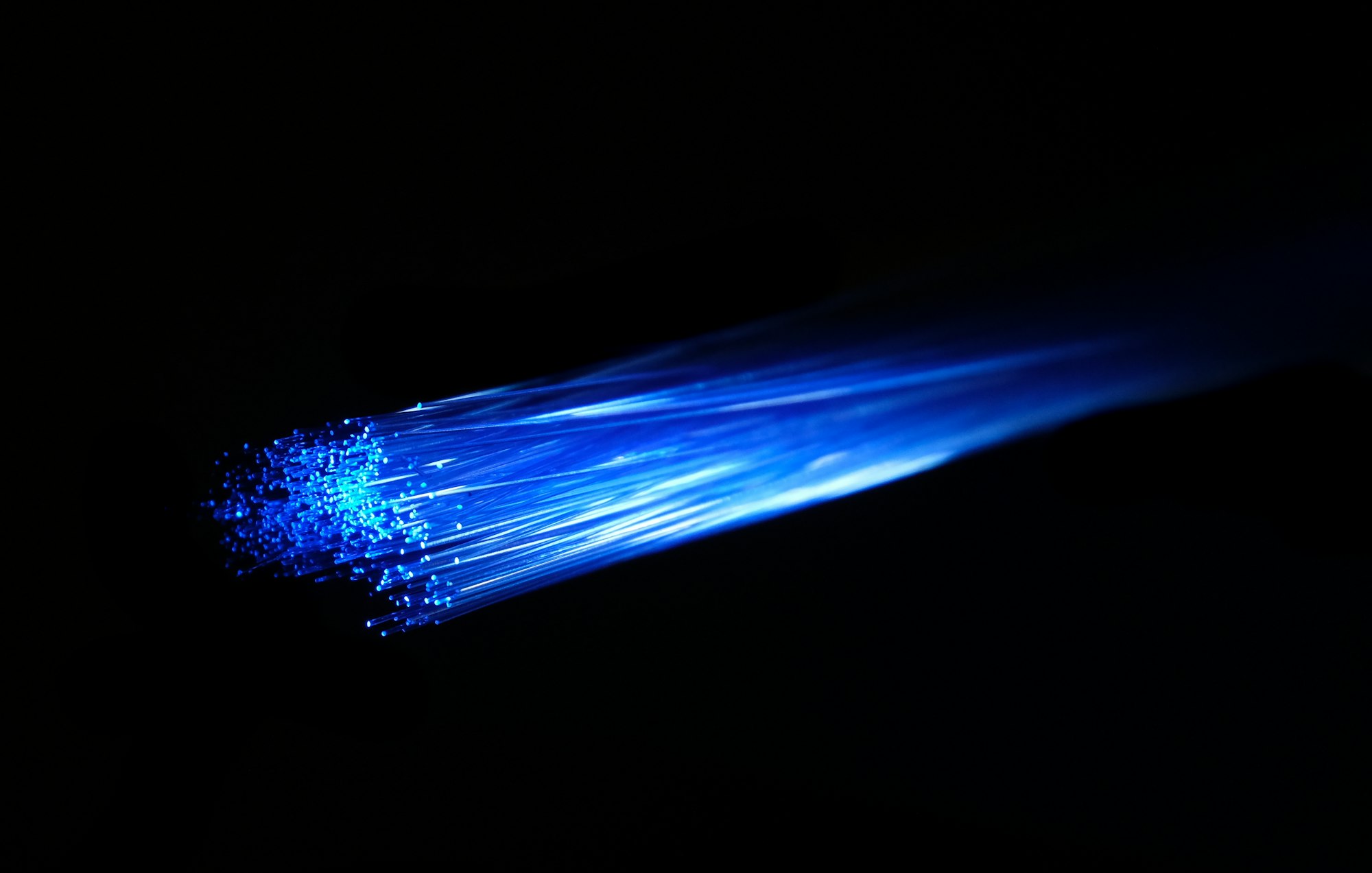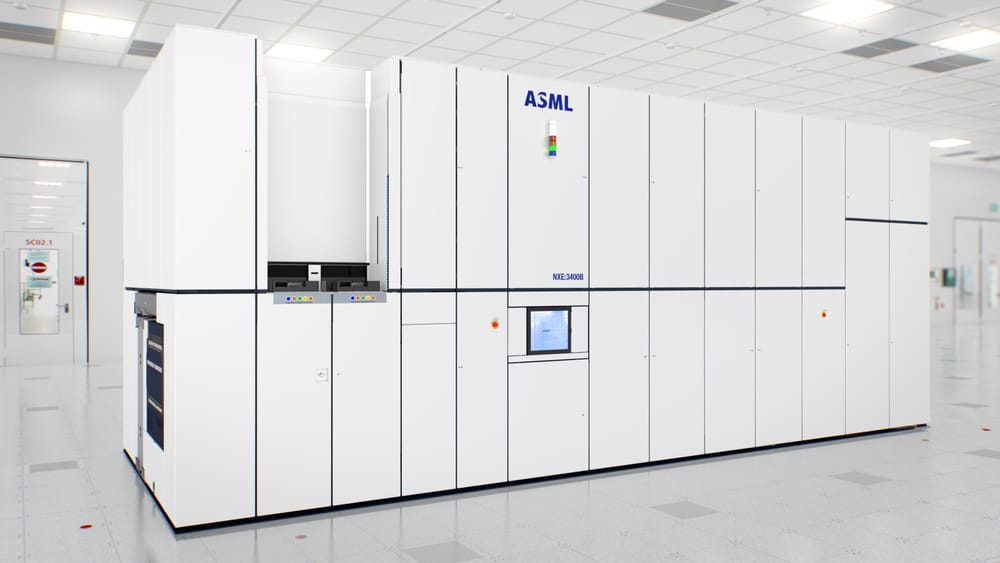Aixtron's Moat: The Epitaxy Powerhouse Sitting on AI’s Next Efficiency Wave
As orders for AI-datacenter lasers accelerate and new GaN and SiC power technologies prepare for their next wave, the German epitaxy specialist could be poised to benefit from the very forces making data centers faster—and far more energy-efficient.

The companies building AI factories tend to hog the spotlight: the GPU giants, the hyperscalers wiring racks together, the switch makers pushing bandwidth. But the plumbing that unlocks speed and sheds watts is fashioned far upstream, in the thin crystalline layers of compound semiconductors grown by a handful of specialized machines. That is Aixtron’s world. The German toolmaker’s reactors deposit the gallium nitride (GaN), silicon carbide (SiC), indium phosphide (InP) and gallium arsenide (GaAs) layers that end up as power transistors, lasers and photonic chips—components that increasingly determine how fast an AI cluster can talk and how much electricity it wastes doing so.
This year hasn’t been kind to the cycle. Today, Aixtron trimmed its 2025 outlook to €530–565 million in revenue after a weaker third quarter, acknowledging that the digestion in power electronics—especially auto and charging—has lasted longer than hoped. The shares sagged on the day. Yet beneath the near-term caution, a new driver has been gathering speed: lasers for the optical networks that stitch AI systems together, and the GaN power devices that feed those systems more efficiently. Those two currents don’t just diversify demand; they push data centers toward lower power per bit and higher system-level efficiency.
To understand the moat, you have to start at the step most likely to make or break yield: epitaxy. Aixtron’s advantage isn’t a single box so much as a platform plus recipes. Its G10 family has variants for SiC, GaN and arsenide-phosphide materials, tuned for tight uniformity over larger wafers and reproducibility run after run. That matters when fabs are ramping 200-mm SiC or moving GaN to bigger substrates, and when photonics manufacturers try to print hundreds of precise layers for lasers on 6-inch InP wafers. It shows up in milestones: in September, Aixtron shipped its 100th G10-SiC system—a marker of how widely the platform has been qualified and how sticky it becomes once a customer has dialed in a process. Switching vendors at that stage means re-qualification risk and time lost.
A second wedge of the moat sits in photonics. The G10-AsP “tool of record” language that management now uses isn’t marketing fluff; it reflects a string of wins at top-tier laser makers as data-center links jump from 400G to 800G and begin the march to 1.6T. In its half-year remarks, Aixtron said lasers should account for roughly one-third of 2025 order intake—a striking number in a year when power electronics stayed soft. The company also singled out new engagements across the U.S., Europe, Japan and Taiwan, including Nokia on next-gen photonic integrated circuits. In other words, even as EV-linked SiC investment paused, the optics side—driven by AI’s networking needs—was accelerating.
You can see the mix shift in the disclosures. Through the first half of 2025, equipment revenues broke roughly 71% power (GaN/SiC), 16% LED (including microLED), 9% optoelectronics, with the balance from R&D tools; after-sales added a steady 21% of total sales. That split reminds investors not to typecast Aixtron as an “auto” play: the company is exposed to EV inverters and chargers, yes, but also to industrial power, fast chargers, consumer adapters and, crucially, to the lasers and modulators that are becoming the circulatory system of the modern data center.
If you’re trying to handicap the next demand inflection, the question looks less like “if” and more like “when.” Management’s tone suggests a staggered turn. On the one hand, SiC remains in a digestion phase outside China; on the other, orders tied to datacom lasers have been a bright spot all year, and the industry network roadmap is quickly extending to 1.6-terabit modules, linear pluggable optics and early co-packaged optics. OIF’s 224G electrical projects, live demos and baselined specifications are the connective tissue beneath those product launches; Cisco and others now project a swift migration to 800G ports in AI back-end networks with 1.6T later this decade. That is the lane where InP/GaAs epitaxy scales, and where Aixtron has longstanding share.
What about the power bill that keeps cloud CFOs awake? Here, too, Aixtron is levered to the right side of physics. GaN devices are moving from phone chargers onto server boards as point-of-load converters near CPUs and GPUs; SiC continues to dominate the higher-voltage conversion stages across power shelves and charging infrastructure. Imec’s newly launched 300-mm GaN power program—where Hyperion, Aixtron’s 300-mm GaN tool, sits in the cleanroom—aims to push GaN onto mainstream wafer sizes to cut cost and unlock broader adoption in data-center power trees. Meanwhile, presentations circulating in Aixtron’s own investor deck cite emerging high-voltage DC architectures and power-stage consolidation that together shave a few percent off end-to-end losses—and in a 100-megawatt campus, a few percent is real money. None of those savings happen without high-quality epitaxy.
This is not to say the road is unchallenged. Competition is formidable and getting more so. Veeco remains the other global incumbent in MOCVD for compound semis, and Chinese suppliers like AMEC have grown materially in LEDs and are vying for share in broader III-V and GaN markets. The presence of capable rivals doesn’t erase Aixtron’s process library and installed base advantages, but it does compress pricing in commoditizing niches and forces continuous R&D to sustain a lead in yield and uniformity. Export controls and tariffs also cast a long shadow over multi-quarter order timing, even if Aixtron has repeatedly noted that its tools sit outside current U.S. tariff scopes. In choppy macro, those headlines matter to quarterly prints whether or not they change five-year demand.
Investors will naturally ask how large the AI-datacenter laser story can be in the P&L. Today, the optoelectronics bucket remains a single-digit share of equipment revenue, and only a subset of that is datacom. But the order book is signaling something bigger. If lasers are roughly one-third of 2025 orders, and if 800G continues ramping as first 1.6T modules enter volume programs, then the optoelectronics slice can lift toward the low-teens of equipment sales on a 2026 view, with upside if onboard or co-packaged optics move faster than expected. The company isn’t immune to lumpiness—large laser programs can pull forward or push out shipments—but the direction of travel is clearer than it was a year ago.

The other leg of the next upturn is less “new” and more “renewed.” SiC demand will find its second wind as 200-mm substrates become standard and EV and charging infrastructure work through excess capacity. The 100-tool milestone for G10-SiC is not a revenue forecast, but it is a useful proxy for customer stickiness and breadth—and for the notion that when the spending resumes, Aixtron is already qualified where it needs to be. GaN, if 300-mm proves out at scale, adds a fresh vector as server makers chase board-level efficiency and as consumer and industrial power broaden beyond chargers. None of that negates the cyclicality of capital equipment; it just means the cycle’s composition is moving in Aixtron’s favor.
Near term, management has to thread a needle. Guidance now assumes 2025 lands below 2024, and Q3 reminded the market that softness in auto-adjacent power devices can more than offset strength in lasers for a quarter or two. At the same time, the second quarter demonstrated that, in this environment, Aixtron can still deliver at the top end of its revenue range when the shipment mix skews to opto. As always with toolmakers, timing—of qualifications, of logistics, of one or two large POs—can swamp trendlines. The underlying trendline, though, looks sturdier than the stock reaction implies. The AI factory is becoming an optical network powered by ever-more efficient converters. Those are compound-semiconductor domains. And when that demand hits the front end, it runs through MOCVD.
Does Aixtron play a role in reducing the power draw of AI factories? Indirectly, but meaningfully. Every step change in optical networking that improves energy per bit relies on ever more precise III-V epitaxy for lasers and modulators. Every percentage point shaved in power conversion—whether by moving to high-voltage DC topologies or by replacing legacy silicon parts with GaN and SiC—rests on high-quality epitaxial layers, often grown on larger wafers with tougher uniformity specs. No one will credit a reactor for a hyperscaler’s utility bill, but the quiet compounding of those materials advances is what makes the bill stop climbing quite so fast.
If your horizon is the next two quarters, this is still a stock yoked to a digestion phase. If your horizon is the next two years, the story is shifting from “if” to “when.” As optics scale to 1.6T and beyond and GaN pushes deeper into the power tree, Aixtron’s platform and process know-how give it leverage to the parts of AI that physics demands—not just faster, but cooler.
Author

Investment manager, forged by many market cycles. Learned a lasting lesson: real wealth comes from owning businesses with enduring competitive advantages. At Qmoat.com I share my ideas.




